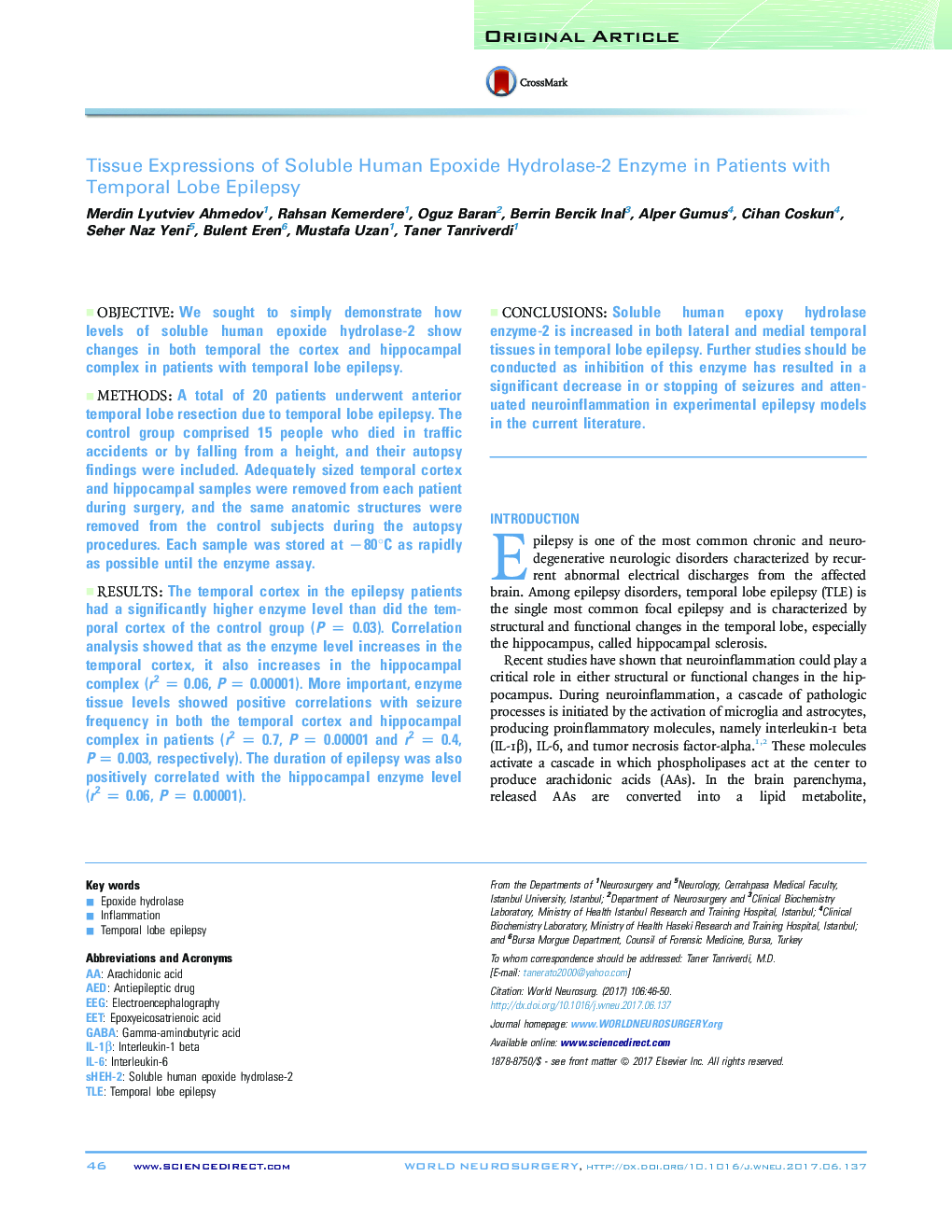| Article ID | Journal | Published Year | Pages | File Type |
|---|---|---|---|---|
| 5633963 | World Neurosurgery | 2017 | 5 Pages |
ObjectiveWe sought to simply demonstrate how levels of soluble human epoxide hydrolase-2 show changes in both temporal the cortex and hippocampal complex in patients with temporal lobe epilepsy.MethodsA total of 20 patients underwent anterior temporal lobe resection due to temporal lobe epilepsy. The control group comprised 15 people who died in traffic accidents or by falling from a height, and their autopsy findings were included. Adequately sized temporal cortex and hippocampal samples were removed from each patient during surgery, and the same anatomic structures were removed from the control subjects during the autopsy procedures. Each sample was stored at â80°C as rapidly as possible until the enzyme assay.ResultsThe temporal cortex in the epilepsy patients had a significantly higher enzyme level than did the temporal cortex of the control group (P = 0.03). Correlation analysis showed that as the enzyme level increases in the temporal cortex, it also increases in the hippocampal complex (r2 = 0.06, P = 0.00001). More important, enzyme tissue levels showed positive correlations with seizure frequency in both the temporal cortex and hippocampal complex in patients (r2 = 0.7, P = 0.00001 and r2 = 0.4, P = 0.003, respectively). The duration of epilepsy was also positively correlated with the hippocampal enzyme level (r2 = 0.06, P = 0.00001).ConclusionsSoluble human epoxy hydrolase enzyme-2 is increased in both lateral and medial temporal tissues in temporal lobe epilepsy. Further studies should be conducted as inhibition of this enzyme has resulted in a significant decrease in or stopping of seizures and attenuated neuroinflammation in experimental epilepsy models in the current literature.
